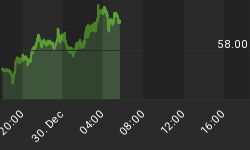The U.S. stock market has undergone one of the most impressive expansions since the financial crisis of 2009, almost tripling in value. While that is obvious from a cursory glance at the charts, what is less obvious are the mountains of debt that investors have taken on to finance their equities buying spree.
Margin debt, the money brokers lend to investors against their portfolios, has been climbing at an even faster clip than the stock markets. Margin debt surged to an all-time high of $665.7 billion in January, coinciding with an all-time market peak.

(Click to enlarge)
Source: Business Insider
Margin debt growth has far outpaced S&P 500 growth post-recession--a trend that considerably increases the risk of selling pressure during market downturns.
Margin debt is a great accelerator when the market is going up but can be just as potent when forced selling kicks in and liquidity evaporates into thin air.
In January, FINRA warned investors of the dangers of margin trading, saying that many investors might be underestimating the real risks of trading on margin.
Some of these risks include:
• The broker can sell the securities in your account to meet the margin call if your account falls below the maintenance margin minimum.
• The broker can sell your securities without calling you first because they are not required to do so.
• You have no power to choose what the broker can and cannot sell.
• The broker can increase the house maintenance requirements without any prior notice.
• You can potentially lose more money than you own in your deposit account, which might force you to hand over additional funds to your broker.
Margin calls are just part of the stock market leverage universe, though. Related: Stock Market Bulls Are Running Out Of Steam
Other types of leverages include securities-based loans (SBLs) offered by finance firms to clients, loans advanced to large hedge funds, net leveraged ETFs and net speculative futures positioning. SBLs, aka 'shadow margins,' pose a particular risk because they go unreported. The entire stock market leverage can, therefore, be much higher than the margin call figure.
Very highly leveraged markets can quickly turn ugly when things start going south.
Markets Unwinding Smoothly
U.S. stock markets have been going nowhere so far this year, with the S&P 500 and the Dow Jones in the red, while the Nasdaq Composite has been barely managing to stay above water.
As you might expect, there's been some deleveraging going on, but with a positive twist-- the market is unwinding in an orderly and non-chaotic fashion.
In the month of March, margin debt declined to $645.2 billion from its January level, a 3-percent drop.
Things look even better when you zoom out and look at the bigger picture. Margin debt increased $67.6 billion in the 12-month period through March--only half the rate compared to the 12-month period through January.

(Click to enlarge)
Source: Wolf Street
That's pretty encouraging when you consider that past corrections from margin call peaks such as January's have mostly been through messy panicked crashes and heavy deleveraging.

(Click to enlarge)
Source: Wolf Street
The smooth unwinding is further supported by the slow rate of interest rate hikes by the Fed.
The takeaway: this market will correct like it has always done in the past, albeit with less mayhem and, possibly, less destruction of shareholder capital.
By Alex Kimani for Safehaven.com
More Top Reads From Safehaven.com:

















